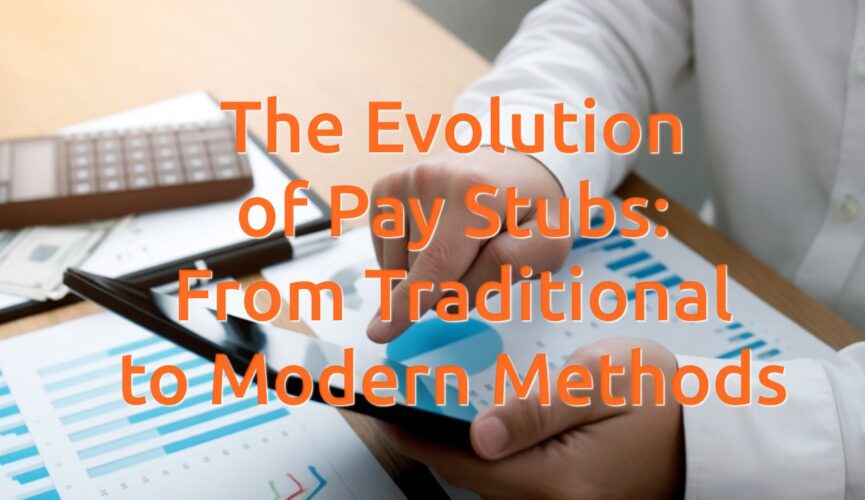In the realm of payroll management and employee compensation, the evolution of pay stubs is a fascinating journey that reflects the changing landscape of technology, regulations, and the workplace. Pay stubs, also known as payslips or paychecks, have come a long way from their humble beginnings as handwritten notes to the sophisticated digital documents we have today. This evolution has been driven by advancements in technology, a shift towards automation, and the need for greater transparency in financial transactions.
The Handwritten Era
The earliest pay stubs were handwritten notes provided by employers to document an employee’s earnings and deductions. These handwritten records often lacked standardization, leading to confusion and disputes. Employers had to meticulously calculate each employee’s pay and manually record taxes, deductions, and contributions. Check out this website to learn new ways to ease your financial recording process.
The Emergence of Typewritten Pay Stubs

As typewriters became more prevalent in the early 20th century, employers transitioned from handwritten to typewritten pay stubs. This change brought some level of standardization and legibility to pay stubs, making it easier for both employers and employees to understand the details of their compensation.
Computerization and Digitalization
The real revolution in pay stubs came with the advent of computers in the workplace. This technological leap allowed companies to automate payroll processes and generate printed pay stubs more efficiently. Payroll software became widely available, enabling businesses to calculate wages, taxes, and deductions accurately. Employees received printed pay stubs that were more organized and detailed.
The Transition to Electronic Pay Stubs
With the rise of the internet and digitalization, electronic pay stubs, or e-stubs, started gaining popularity. Companies began delivering pay stubs to employees electronically via email or through secure online portals. This transition to electronic pay stubs offered several advantages, including reduced paper usage, cost savings, and faster delivery to employees.
Mobile Accessibility
In the modern era, employees can access their pay stubs conveniently using mobile devices. Employers have developed mobile apps and responsive web portals that allow employees to view their pay stubs, tax documents, and other financial information on the go. This accessibility has improved the overall employee experience and contributed to greater transparency.
Integration with Payroll Software
The integration of pay stubs with payroll software has further streamlined the payroll process. Automated calculations and deductions are now a standard feature of payroll software, reducing errors and ensuring compliance with tax regulations. This integration has made it easier for businesses to manage payroll and provide accurate pay stubs to employees.
Increased Customization
Modern pay stubs are highly customizable. Employers can include detailed breakdowns of earnings, deductions, and benefits. This level of customization allows for better communication of compensation structures and helps employees understand the full value of their employment package.
Emphasis on Security and Compliance

In today’s digital age, security and compliance are paramount. Payroll systems and pay stub delivery methods are designed with robust security measures to protect sensitive financial data. Compliance with tax laws and labor regulations is also a top priority, ensuring that pay stubs accurately reflect all relevant deductions and contributions.
Environmental Considerations
The evolution of pay stubs has also taken environmental concerns into account. Many organizations have adopted eco-friendly practices by reducing paper usage through electronic pay stubs. This not only saves trees but also reduces the carbon footprint associated with printing and mailing physical pay stubs.
The Future of Pay Stubs
As technology continues to advance, the future of pay stubs is likely to involve even greater automation, personalization, and accessibility. Blockchain technology may be used to enhance the security and transparency of pay stubs. Artificial intelligence may play a role in predictive analytics related to employee compensation.
In conclusion, the evolution of pay stubs reflects the broader evolution of the workplace and technology. From handwritten notes to electronic, mobile-accessible, and highly customized documents, pay stubs have come a long way in improving transparency, efficiency, and convenience for both employers and employees. As we look to the future, the integration of cutting-edge technology and a commitment to security and compliance will continue to shape the landscape of pay stubs.
